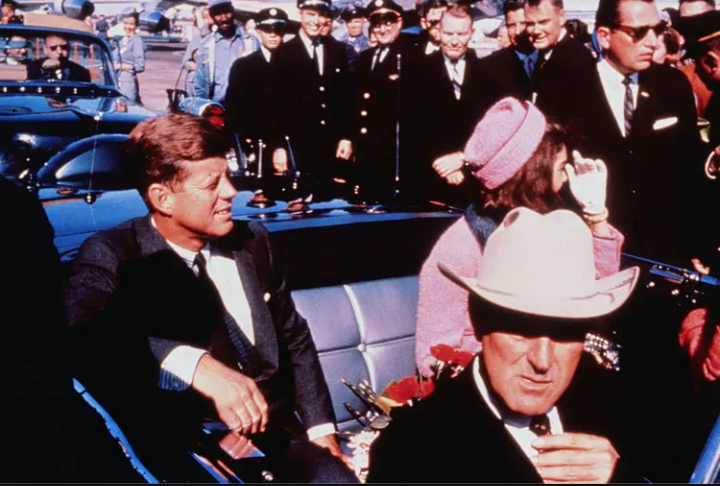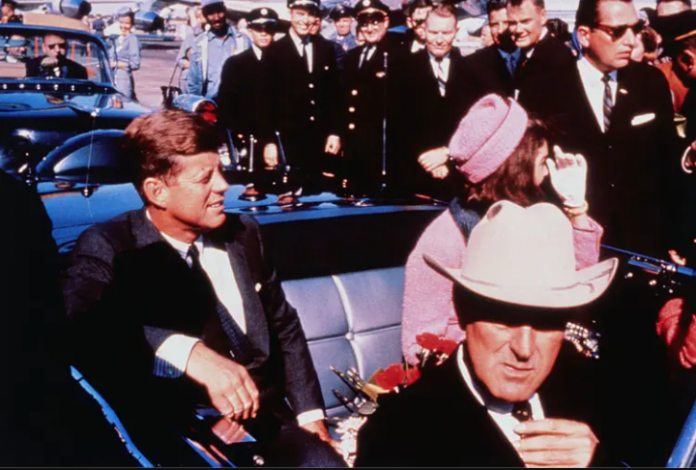Newly released documents from the U.S. National Archives have reignited interest in the assassination of President John F. Kennedy. While these files shed light on Cold War-era intelligence operations, they do little to support the long-standing conspiracy theories surrounding JFK’s death.
With over 2,200 newly declassified records available, historians and researchers have barely scratched the surface. Most of the National Archives’ collection—more than six million pages—has already been made public. Yet, speculation about what remains undisclosed continues to fuel intrigue.
CIA Secrets and Oswald’s Mysterious Past
An initial review of the 63,000 pages released this week shows that many documents focus on covert CIA operations, particularly those in Cuba. However, nothing found so far contradicts the official conclusion that Lee Harvey Oswald acted alone in assassinating JFK on November 22, 1963.
Philip Shenon, a journalist and author of A Cruel and Shocking Act: The Secret History of the Kennedy Assassination, noted, “Nothing points to a second gunman. I haven’t seen any major revelations that change the essential history, but it’s still early.”
Oswald, a former Marine, was arrested shortly after the shooting, having fired from a sixth-floor window of the Texas School Book Depository in Dallas. Two days later, nightclub owner Jack Ruby fatally shot Oswald during a live television broadcast.
While the Warren Commission concluded in 1964 that Oswald acted alone, questions about his activities leading up to the assassination persist. Some of the newly released files contain details about Oswald’s trip to Mexico City in September 1963. During this trip, he reportedly attempted to contact the Soviet embassy after having previously lived in the USSR.
The CIA had been monitoring Oswald closely at the time, raising questions about what intelligence officials knew before the assassination. “There’s reason to believe Oswald openly talked about killing Kennedy in Mexico City,” Shenon said.
The Persistent JFK Conspiracy Theories
For decades, Kennedy’s assassination has been at the center of numerous conspiracy theories, ranging from CIA involvement to mafia connections and even Soviet interference. The newly declassified documents have only added to the speculation, with many turning to online forums to analyze and discuss their contents.
Even though many of these theories have been debunked, the secrecy surrounding certain government files has kept public interest alive. Some believe the U.S. government withheld key details not to protect a conspiracy, but to cover up intelligence failures leading up to the assassination.
New Insights into Cold War Espionage
While the documents have not revealed groundbreaking information about JFK’s death, they have provided valuable insights into U.S. intelligence operations during the Cold War.
One of the notable revelations involves a 1975 investigation into the CIA’s knowledge of Oswald. A previously redacted memo has now confirmed that the Mexican government had secretly infiltrated the Cuban embassy in Mexico City. The document also reveals that former Mexican President Luis Echeverría Álvarez was involved in intelligence exchanges with the CIA.

Additionally, newly unredacted sections of President Lyndon B. Johnson’s intelligence briefings from the days following Kennedy’s assassination have now been made public, offering historians a rare glimpse into top-secret government deliberations.
What’s Next?
While this latest release is significant, thousands of pages remain classified. Many historians and researchers are still pushing for full disclosure, believing that more information could help answer lingering questions about Oswald’s motives and the extent of U.S. intelligence oversight.
Regardless of whether these files confirm or dispel existing theories, they provide a fascinating look into the intelligence strategies of the Cold War era. As experts continue to analyze the documents, the debate over JFK’s assassination is unlikely to end anytime soon.



